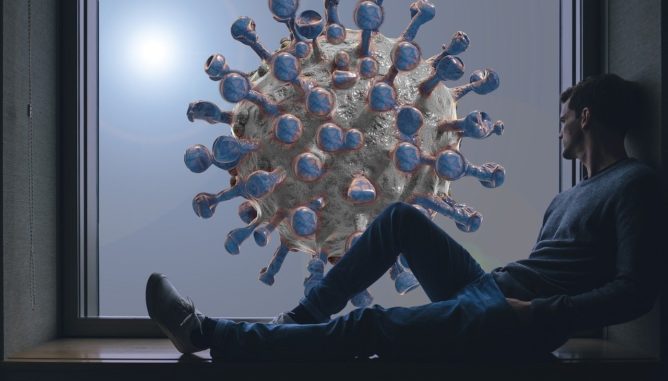Due to the COVID 19 crisis, many social activities are migrating to the Internet – and so a sense of community is emerging as in its best, early days.
Every few days, tens of thousands of Instagram users gather at a virtual dance party hosted by DJ D-Nice. The hugely popular Club Quarantine live streams have attracted celebrities from all corners of the Internet, including Michelle Obama, Oprah Winfrey and Mark Zuckerberg. Sometimes up to 150,000 people attended. For a few hours, teenagers danced to the same music as some of the richest people in the world.
We all love each other
For some, this phenomenon – the democratic aspect of it, the coming together of a huge community – awakens a feeling of déjà vu. The same feeling comes over you when you suddenly exchange back tips with strangers (currently the most important search term on Google in the US) or start a new chatroulette on Google Hangouts. Right now, everyone is alone, and everyone is united in being alone, and it feels as if the barriers between us on the Internet are disappearing.
Is this an illusion or has something really changed? That our online behaviour would not remain exactly the same was foreseeable. The corona virus has changed our lives dramatically. We are locked up at home, and any otherwise perfectly normal interaction – happy hours, hugs, kisses, voting for yourself or scratching an itchy spot on your face – is suddenly considered potentially deadly. Still, in an age of fierce trench warfare and heavy troll provocation, one might not have expected that the Internet would become beautiful again if everything moved there.
When social media was social
It is as if the clock is turned back to a time when things were even more serious on the web. Back then, the innovation of having a voice and being able to contact anyone around the world gave us a sense of endless opportunity and optimism. That was in the late 1990s and early 2000s, ahead of social media and smartphones. Back then, going on the Internet still meant using time wisely to seek community.
This can be seen in people’s renewed willingness to build virtual relationships. Before we became corrupted and distanced and disrespectful by social media, we took the Internet promise of happily random encounters much more seriously. Today it is cool again to hang out with random acquaintances (online, of course). People participate in video-conferences with others they have never seen before; there are events ranging from book clubs to happy hours to nightly flirting. Collective moments of creativity are shared on Google Sheets, people search for new pandemic pen pals and send softer, less obvious emails.
Postcards, answering machine, parcel
You can also see it in the revival of old relationships. Before sentimentality was replaced by an annual tidying up of Facebook friends, it was a pleasure to keep in touch with classmates from high school or to discover old primary school teachers. Today we think again of our old friends who are far away. Because on the internet it doesn’t make a difference anymore if you meet them or neighbours. And analogies are also being rediscovered: We send postcards, leave messages on the answering machine for the family and send emergency packages.
Of course these memories could be romantically transfigured. Bad guys existed even in the early days of the Web, says Andrew Sullivan, CEO of the non-profit Internet Society. But back then, “people were more careful about how they communicated online. Dial-up connections made it expensive to search endlessly through long forums, so time was better spent online. Also, initially only people with enough education, money and knowledge had access, so there were far fewer users.
When the current crisis is over, will the Internet still be a more beautiful and pleasant place? Leah Lievrouw, who is a professor at the University of California in Los Angeles and is concerned with social change and the Internet, is actually seeing an unprecedented sense of community emerging. “We realize that we don’t have to be physically present to mobilize,” she says. And that’s not because of the physical infrastructure, she says, but because of how we use the technology now.
